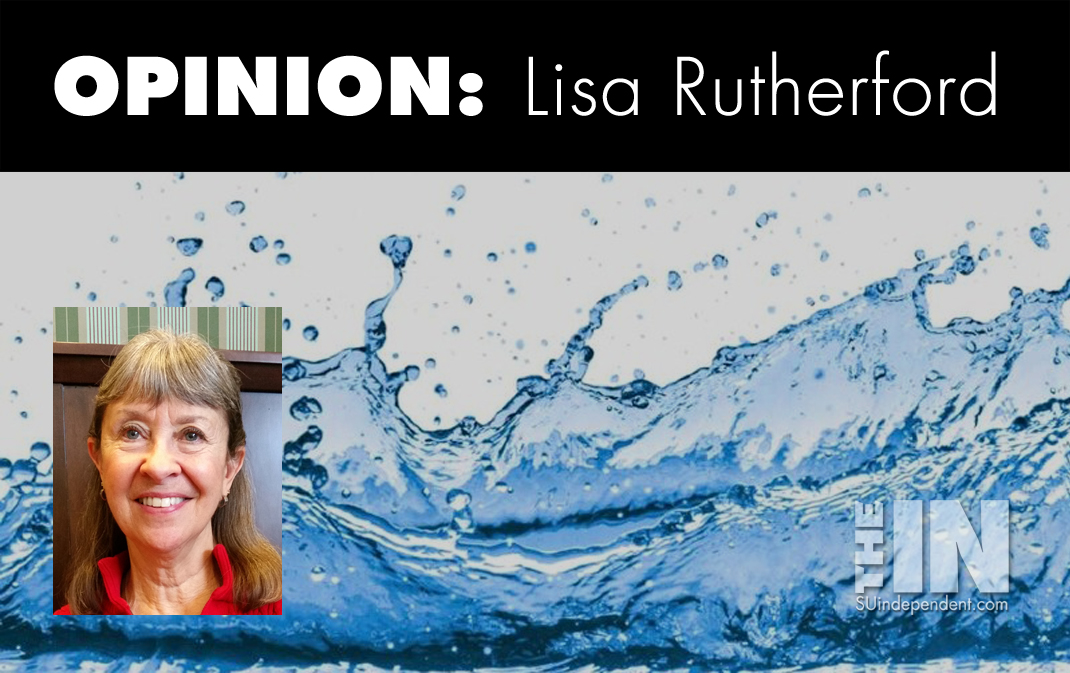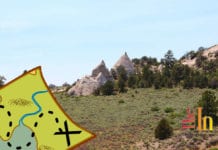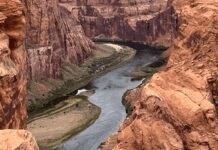
What does water mean to you?
I have been studying water since 2006 and have gained a new and greater appreciation for water. Now, every time I turn on the faucet I am reminded how miraculous this element is—an element unlike any other.
It’s relevant we consider this topic as we enter spring and summer and as we cope with the ongoing drought. March 22 was World Water Day and April 22 is traditionally Earth Day. In fact, the theme of this year’s Water Day was “Valuing Water” and asked us all to consider, “What does water mean to me?”
I often ask myself, “Why does water interest me so much? Why am I so disturbed when I see it wasted? Why am I so opposed to securing more water when we have such plenty already? My study has provided some answers and created an aura around it for me.
It’s a powerful element physically as we often witness during storms and floods but it’s a soothing element, too. Water can have a powerful effect on our emotions. Just think about how you react when you are around water. The sound of waves, waterfalls, or even a fountain can be mesmerizing and soothing. To me it’s awesome to realize that the water we have and use now is the same water and virtually the same amount of water that’s been on the earth for billions of years.
It is considered sacred by many, as is witnessed by its use throughout the world in ceremonies by a variety of religions. There are many books that deal with water and spirituality.
A focus of Sacred Water by Nathaniel Alman is “to remind us of the importance of sacred water in our lives today and throughout the long history of human civilization.” Alman quotes anthropologist James A. Swan who asserts regarding the sacred or spiritual nature of water: “A thing or a place becomes sacred ultimately to us when it is perceived as somehow able to energize within us those feelings and concepts we associate with the spiritual dimensions of life.”
There are many metaphors and similes that reference water such as “Spiritual life is like living water that springs up from the very depths of our own spiritual experience. In spiritual life everyone has to drink from his or her own well.”
Water, because of its essential quality, underlies sacred myths and legends around the world of early Egyptians, Babylonians, Chinese, Africans, Indigenous people of the Americas, to name but a few. Water has held a sacred place in cultures and religions of the world for centuries. Baptism has been an integral piece of Christianity. Ritual cleansing is important in both Judaism and Islam. Water has held great significance in Hinduism because it is believed to have spiritual cleansing powers. The fact that so many of India’s rivers are polluted may challenge that belief until one considers that Hindus believe the water can “cleanse” itself.
So water is more than just nourishment for our bodies. In fact, it can be said, “It’s the soul of the Earth”—to coin another metaphor. So, it seems there’s more to my appreciation of water and my desire to protect the resource in this desert community in which we live than I had imagined. The water that nourishes our land, our bodies, and our souls is not to be wasted. It is to be valued and protected. Every time I turn on the faucet, I marvel at the product that comes out and know that, rather than needing to get more, we need to protect what we have. But, how DO we treat it?
Do we treat it with the respect it deserves? We let it drip and leak. We water our lawns in this arid desert. We let it run while brushing our teeth, run when we should turn it off and more. Certainly not the way such a special and precious resource should be treated.
Everyday around the world people struggle to get water, some walking miles daily for just enough to meet basic needs while ours flows easily and sometimes wastefully out our taps. Some may question the assertion of water’s spiritual meaning but certainly no one can question its importance. Some assert that our water infrastructure providing easy access has led to this lack of value, but I’m sure none of us would want to give that up. How do we value the product and still have it plentiful?
Water has always been a challenge in our dry area of Utah and water projects are nothing new to the citizens of our county. Settlement in the St George, Utah region required back-breaking efforts for water diversion and irrigation.
Author Lyman Hafen made it clear in his book about St. George, Where Two Streams Meet that even back in the late 1800s people wanted more water with this quote: “We need more water. And we have two choices: reduce consumption and curtail growth now, or raise the resources and the resolve to transport water from a source many miles away.”
“Many miles away” then was 18 miles! They opted for the Cottonwood Canal in 1903 that cost $14,000.
Even though the people of the late 1800s and early 1900s felt they needed more water due to growth, it was more a matter of moving it than the fact that it was not available.
Their situation was different than ours. They had less people to use available local water. Now we have more people but the same water to satisfy our population and the coming growth.
So what’s the plan? Conservation? Managing growth better? Reuse? Nope. Although our water district talks about conservation another pipeline is the focus—not 18 miles long but 140 miles to a diminishing resource outside Washington County—the Colorado River. The $14,000 county citizens agreed to pay in 1903 ($777 per mile) would have been around $418,000 ($23,222 per mile) in 2021 dollars. At about $14,300,000 per mile today’s proposed $2 billion (without financing interest!) Lake Powel Pipeline is a heavy lift.
According to officials demand is driving the pipeline’s need. Around 2000 we were using over 400 gallons per person per day. Our current usage is about 271 gpcd. Over the past twenty years our per capita water use in Washington County has gone down but it continues to be extremely high compared to other areas.
Our water district says we can’t be compared to other areas, and yet, their consultants did just that in the 1998 Water Needs Study, which provided their foundation for the pipeline. They compared us to many other areas and our use compared poorly.
Officials assert the LPP would be a godsend for this county. In fact, our former water district manager argued that we would be running out of water by 2020. Well, folks, it is 2021 and we are not running out of water but do face a situation that requires our focus.
We face a drought condition that requires—in fact, demands!—our concerted effort to manage this essential resource well so that growth can continue to help this county prosper. We do not need to seek more from an unreliable source 140 miles away. We all need to ponder our relationship with water and evaluate how we are using this indispensable, unique element that is the essence of our existence. We need a solid water ethic. So, what DOES water mean to you?
Viewpoints and perspectives expressed throughout The Independent are those of the individual contributors. They do not necessarily reflect those held by the staff of The Independent or our advertising sponsors. Your comments, rebuttals, and contributions are welcome in accordance with our Terms of Service. Please be respectful and abide by our Community Rules. If you have privacy concerns you can view our Privacy Policy here. Thank you!
Click here to submit an article, guest opinion piece, or a Letter to the Editor




